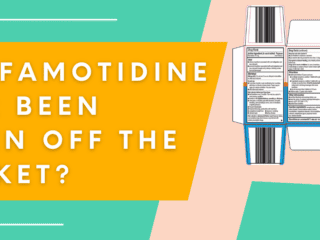Generic Name: Pantoprazole
Brands: Protonix
Class: Stomach Acid Reducer (Proton Pump Inhibitor)
Availability: Prescription needed
Molecular Formula: C16H14F2N3NaO4S
Substance UNII: D8TST4O562
What is Pantoprazole?
Pantoprazole is a proton pump inhibitor (PPI), otherwise known as a stomach acid reducer. It is often sold under the trade name Protonix.
What is Pantoprazole Used For?
Pantoprazole is used as a short-term treatment for gastroesophageal reflux disease (GERD). This condition results in damage caused by stomach acid that flows backward up the tube between the stomach and the throat (esophagitis); it can cause heartburn. This drug is not used for immediate relief for heartburn symptoms, however.
This medication can also reduce stomach acid production when certain medical conditions, such as Zollinger-Ellison syndrome, cause an increase in stomach acid. If a patient has damage to the esophagus caused by stomach acid reflux in a condition called erosive esophagitis, pantoprazole will be given as a short-term treatment to allow the esophagus to heal.
It can be prescribed to adults and for children who are 5 years of age and older.
How Does Pantoprazole Work?
Pantoprazole may be given as a delayed-release oral suspension, a delayed-release tablet, or given as an intravenous injection (Protonix I.V.) by a healthcare provider. It is used to prevent the stomach from creating excess stomach acid that ends up flowing backwards into the esophagus.
The drug accomplishes this action by attaching itself to the gastric proton pump, or (H+,K+)-ATPase enzyme system, on the surface of the stomach. This gastric proton pump secretes the stomach acid that helps with the digestion of food. Therefore, by binding to these pumps, it prevents other substances from attaching to these pumps, thereby inhibiting excessive stomach acid production.
In short, pantoprazole stops the gastric proton pump during the final phase of stomach acid production. It prevents the acid from being secreted for a certain length of time.
How Long Does It Take for Pantoprazole to Work?
The length of time it takes will depend on how it is administered, the dosage, and whether food is taken with the medication. The delayed-release tablet form of pantoprazole will typically take about 2.5 hours to reach peak concentration when taken with or without a meal.
When this drug is given as an oral suspension and added to apple juice or applesauce, it takes about 2 hours to work. If a patient eats a high-fat meal while taking the oral suspension, it can delay the absorption of the drug in the body by up to 2 hours or longer. So, pantoprazole should be taken 30 minutes before a regular meal when using the oral suspension.
Do Not Use Pantoprazole If:
This medication may not be the right choice during different situations. According to the FDA, you should not use pantoprazole if experiencing these circumstances:
- Taking rilpivirine-containing products
- Hypersensitivity to substituted benzimidazole
- Hypersensitivity to any chemical formula in the drug
Please be aware that the following list of contraindications may not be complete. Continuing research may discover other situations where pantoprazole should not be used.
Disclaimer: this article does not constitute or replace medical advice. If you have an emergency or a serious medical question, please contact a medical professional or call 911 immediately. To see our full medical disclaimer, visit our Terms of Use page.








